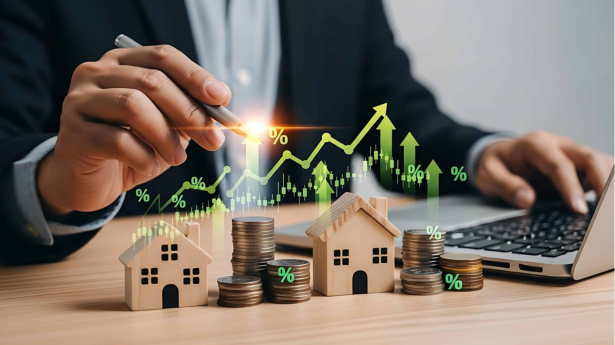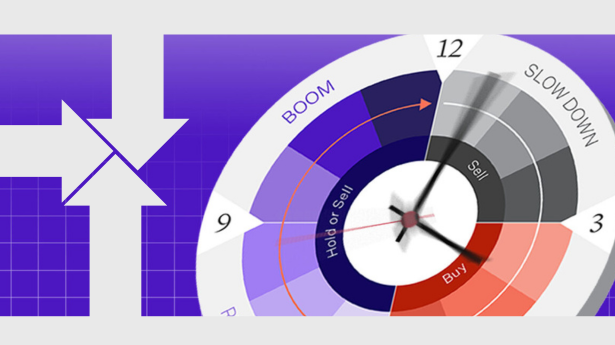When you’re investing in property in Australia in 2025 the phrase rental yield vs capital growth is one you’ll hear repeatedly. Should you focus on the cash-flow from rent, or the long-term increase in value of your asset? In this article we examine exactly that question: which matters more in 2025? We’ll explore the definitions, look at the latest data, address common concerns and help you decide how to apply this to your investment strategy. My thesis: there is no one-size-fits-all answer. What matters more depends on your financial goals, risk tolerance and timeframe. But in 2025 the market conditions lean toward a blended, balanced approach rather than a pure one-sided strategy.
What are rental yield and capital growth (and why the comparison matters)
In plain terms, rental yield is the income-return figure you get from a property, compared to what it costs or is worth. It’s typically calculated as (annual rental income ÷ property value) × 100. It shows how effectively your investment is generating cash flow.
By contrast, capital growth represents the increase in value of the property over time. When you eventually sell (or refinance) the asset, that uplift is where growth shows up.
Why does the comparison matter? Because when you invest, you must match strategy to your goals:
- If you want steady rent income (cash flow), yield matters more.
- If you want wealth accumulation over decades (equity growth), then capital growth matters more.
Many property-investment guides emphasise one or the other, but as one article explains: “The right choice depends on your financial goals and risk tolerance.”
In addition, market conditions in 2025 are showing some shifts: rents rising strongly, property values still increasing albeit variably across Australia, and interest rate / financing factors influencing both yield and growth prospects. So the balance between yield vs growth is arguably more important now than ever.

Figure 1. Capital value growth versus yields in Australasia.
Source: JLL Research 4Q24
The current Australian market in 2025 – data, trends and what it tells us
Let’s look at what the latest data is telling us about yield and growth in Australia in 2025.
- A recent summary indicates that in major capital-city markets the annual median property value growth (to June 2025) ranged from about 1.0% in Melbourne up to about 9.8% in Adelaide.
- Another research paper from JLL shows a strong inverse correlation between yields and capital growth in Australian markets (Pearson coefficient ~ -0.72) meaning historically when capital growth rises yields tend to fall, and vice-versa.
- According to one guide, a “solid” gross rental yield in the Australian market is around 4% or higher.
What do these data points tell us? In 2025:
- Investors in high-growth suburbs need to accept that rent relative to price may be lower (yield lower) while capital appreciation is stronger.
- Conversely, high-yield properties (where rents are relatively high compared to purchase price) may be in areas where capital growth is slower.
- Because of rising cost of borrowing and higher interest rates for many investors, cash-flow risk (i.e. yield shortfall) is more material than in the past; therefore monitoring yield is no longer optional.
In short, the evidence supports the thesis that both metrics matter; yield and growth are two sides of the same coin, and the successful investor will monitor both.
Common questions, concerns and misconceptions about yield versus growth
Let’s answer some of the frequently asked questions and address misconceptions when comparing rental yield vs capital growth:
Q1: Can I have high yield and high growth in the same property?
Yes, but it’s rare. Typically, areas with very high growth potential (central city, high-demand suburbs) have higher purchase prices which push yield down as a percentage. Meanwhile, properties in regional or less expensive suburbs may offer higher yield but slower growth.
Q2: Does yield matter if I’m holding for 20+ years anyway?
Yes, because even if you’re holding long-term, you still need to cover costs (interest, maintenance, vacancies). A low yield means you may need to inject funds to sustain the investment. One guide warns: “You might find yourself writing a cheque every month” in a low-yield scenario
Q3: Is capital growth guaranteed?
No. Past performance is not a guarantee of future performance. Growth depends on many factors: location, infrastructure, demographic shifts, economic cycles etc.
Q4: Which strategy suits first-time investors?
Often yield-focused strategies are more appropriate for early investors needing cash-flow and serviceability; whilst experienced investors with established portfolios may lean more toward growth.
By understanding these questions you reduce the risk of adopting an inappropriate strategy for your circumstances.
Practical strategy – how investors should think about balancing yield and growth in 2025
In 2025 you’re better off thinking in terms of balance, not choosing yield or growth exclusively. Here’s how you can approach it:
- Define your goal: Do you need income now (yield) or do you prioritise building equity and leveraging it later (growth)?
- Check serviceability: With interest rates higher, ensure your rental income (yield) covers or at least contributes significantly to costs.
- Look at location metrics: For growth look for established suburbs with infrastructure, demographic tailwinds; for yield look for areas with strong rental demand, good tenant profile and moderate purchase price.
- Time horizon matters: If you’re holding for 10–20 + years you can afford some yield shortfall in the short-term; if your timeframe is shorter you might favour higher yield.
- Diversification: Consider mixing property types – e.g. one high-yield asset plus one growth-asset to spread risk.
- Review regularly: Markets change. What was growth-heavy in 2020 may be yield-favourable in 2025. Keep the metrics under review.
By adopting a structured approach you can use both rental yield and capital growth as levers in your property investment strategy in 2025.
Which approach suits you? Investor profiles and decision criteria
Let’s map two typical investor profiles to help you think which side you lean toward:
Profile A – The Cash-Flow Focused Investor
- Needs rental income for living expenses or servicing debt now.
- Lower risk tolerance for short-term losses.
- Prefers moderate purchase prices, good yield (4 %+), possibly regional or outer-metro areas.
- Accepts slower growth in exchange for stronger immediate income.
Profile B – The Wealth-Builder Investor
- Has capacity to contribute short‐term losses for long-term gain.
- Longer time‐horizon (10-20+ years).
- Prefers high-demand suburbs, even if yield is modest (2–3 %).
- Invests for equity buildup, refinance, portfolio expansion.
Decision Criteria:
- What is your time horizon?
- What is your borrowing and servicing capacity under current interest rates?
- How much liquidity do you have if rent falls or vacancy rises?
- What is your tax / gearing position? (Seek independent advice).
- How comfortable are you riding out value fluctuations?
Use these criteria to choose whether your current investment strategy should lean toward yield, growth or a hybrid.
In 2025 the debate of rental yield vs capital growth remains one of the most important for property investors in Australia. The key takeaway: neither metric alone is sufficient. You must align your strategy with your goals, serviceability, time-horizon and risk tolerance. The market data shows that yield and growth continue to move in different ways across locations and time-cycles. By approaching your investment with a balanced, informed mindset you position yourself to derive both cash-flow and long-term wealth creation.
Review your current or next property with both metrics in mind. Use a rental yield calculator, check growth prospects in the suburb, and ask yourself: “Does this property suit my strategy in 2025?” If you’d like help mapping the right mix for your portfolio or locating properties that meet those criteria, CONTACT US for a tailored discussion.
——————————————————————————————————————————-
External links (authoritative sources):
- Rental Yield VS Capital Growth
- Capital Growth vs. Rental Yield: What’s more important for property investors?
- Is It Better To Focus On Capital Growth Or Rental Yields?
- Australasia’s property market: capital growth vs. yields
- Investor’s Guide: Analyzing Rental Yield vs. Capital Growth in Australian Real Estate







